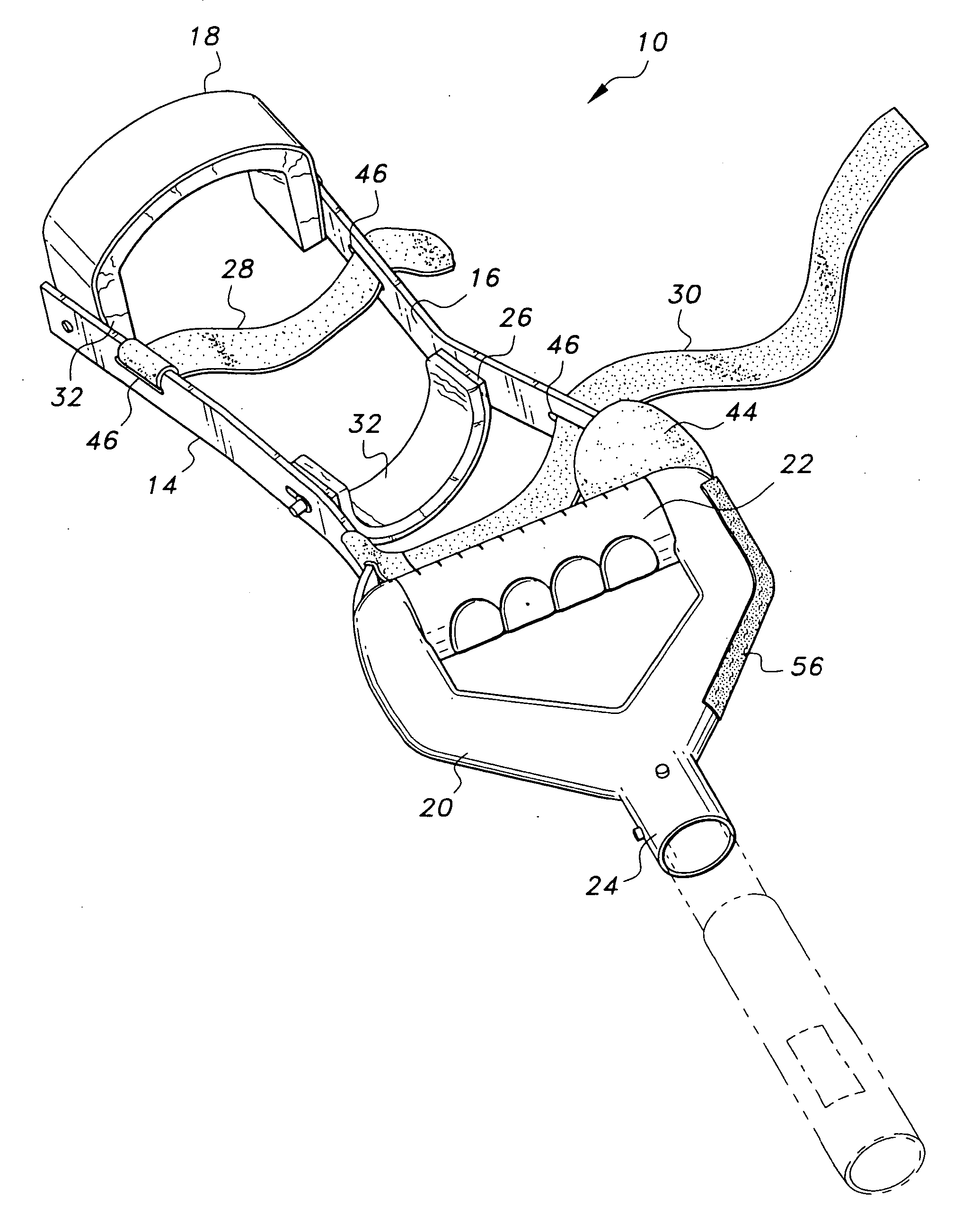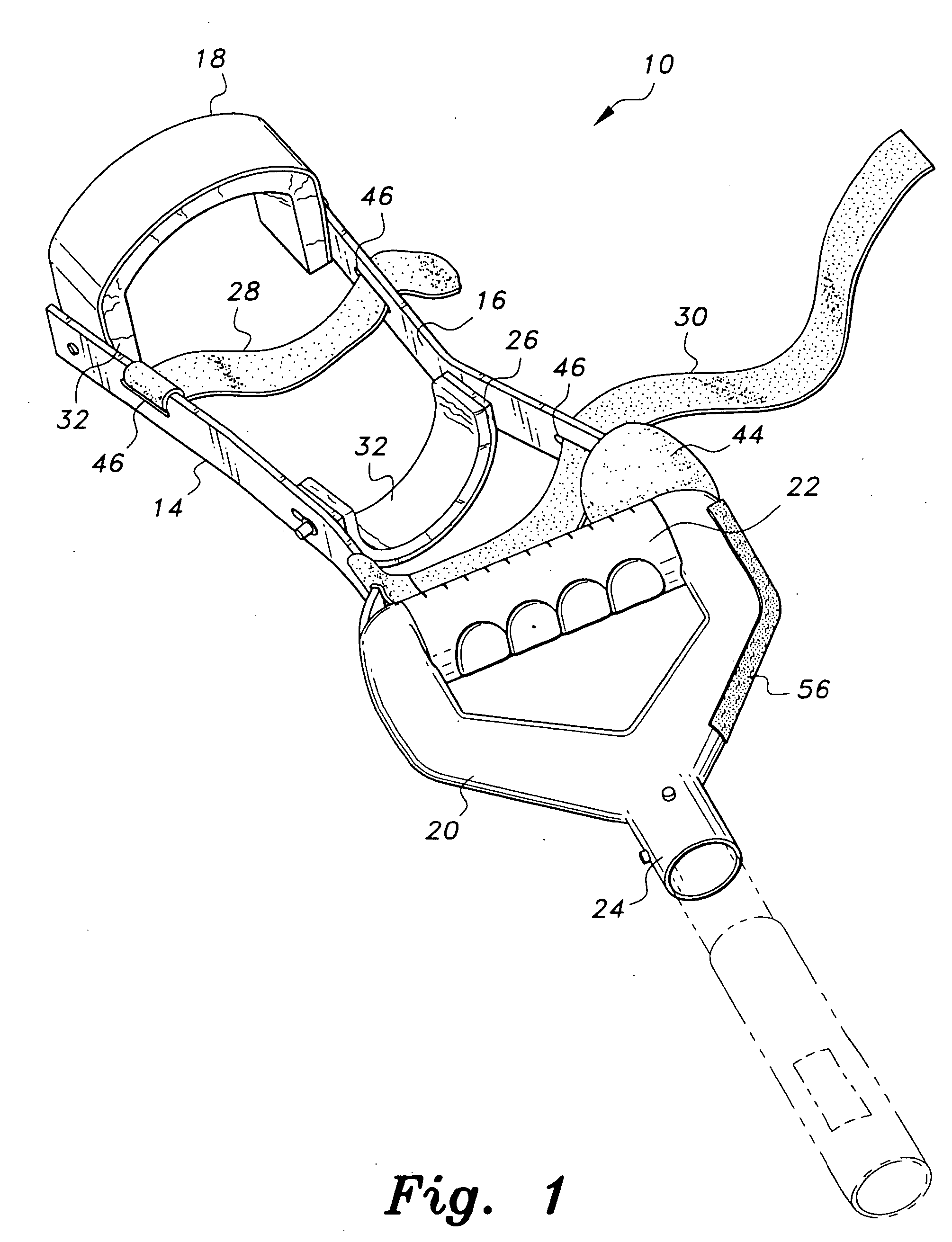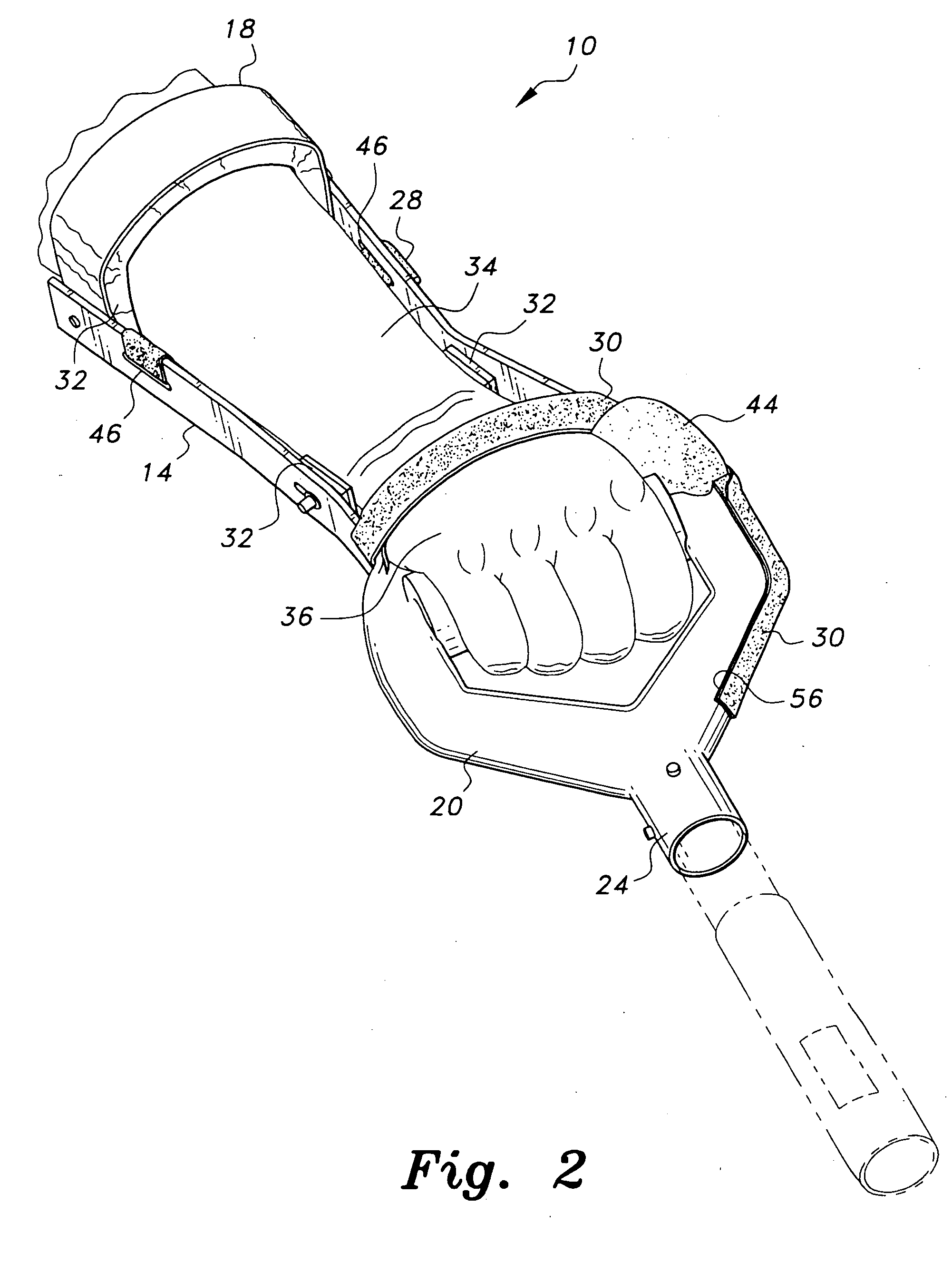Forearm handle for disabled
a technology for disabled hands and handles, applied in the field of handles, can solve the problems affecting the use of long handles, and affecting the function of hands, etc., and achieve the effect of reducing the stress placed on the wris
- Summary
- Abstract
- Description
- Claims
- Application Information
AI Technical Summary
Benefits of technology
Problems solved by technology
Method used
Image
Examples
Embodiment Construction
[0020] The present invention is a forearm handle for the disabled, designated generally as 10 in the drawings and referred to as the “forearm handle.” Referring to FIGS. 1-3, the forearm handle 10 is designed to receive attachments that allow a user afflicted with a handicap in their arm, wrist, or hand to do many tasks with one arm that normally require the use of two arms, while at the time removing the stress from the wrist and distributing the stress across the forearm. The forearm handle 10 is further designed to be used by persons who have lost a hand, or by people who suffer no handicaps that still wish to relieve the strain on their joints caused by the use of long-handled or pole tools, such as mops, brooms, and shovels.
[0021] The forearm handle 10 is shaped like a frame or brace that fits over the forearm of a user from just below the elbow to below the hand. The forearm handle 10 has two brackets 14, 16 extending along opposing sides of a user's forearm 34. The brackets ...
PUM
 Login to View More
Login to View More Abstract
Description
Claims
Application Information
 Login to View More
Login to View More - R&D
- Intellectual Property
- Life Sciences
- Materials
- Tech Scout
- Unparalleled Data Quality
- Higher Quality Content
- 60% Fewer Hallucinations
Browse by: Latest US Patents, China's latest patents, Technical Efficacy Thesaurus, Application Domain, Technology Topic, Popular Technical Reports.
© 2025 PatSnap. All rights reserved.Legal|Privacy policy|Modern Slavery Act Transparency Statement|Sitemap|About US| Contact US: help@patsnap.com



